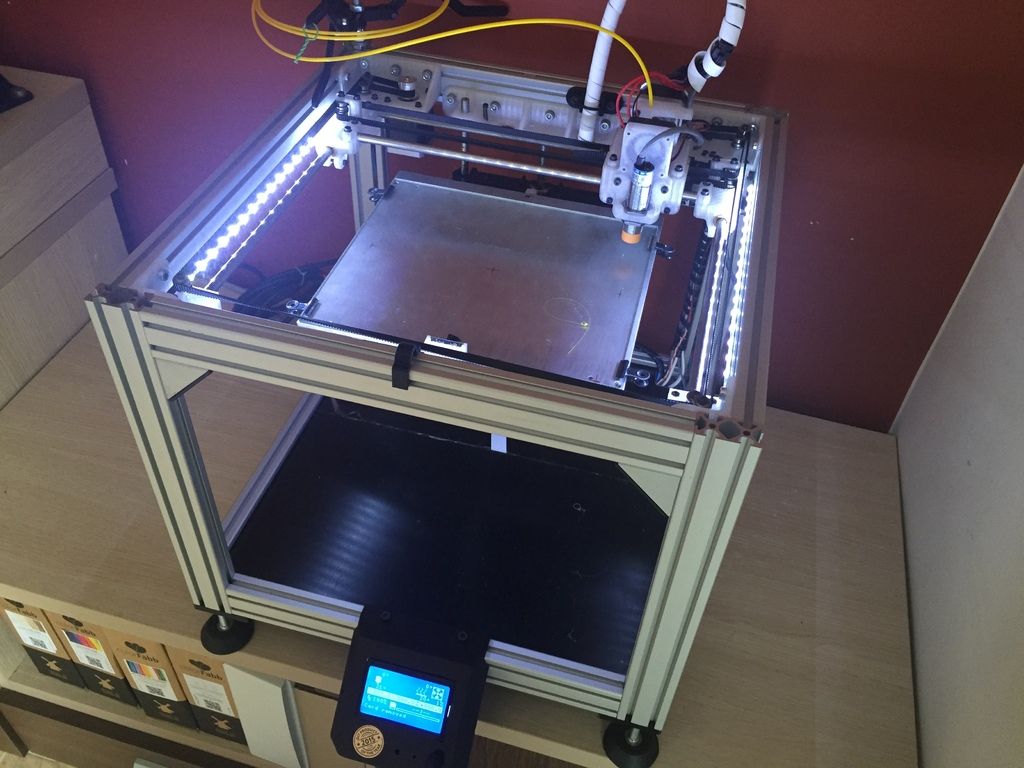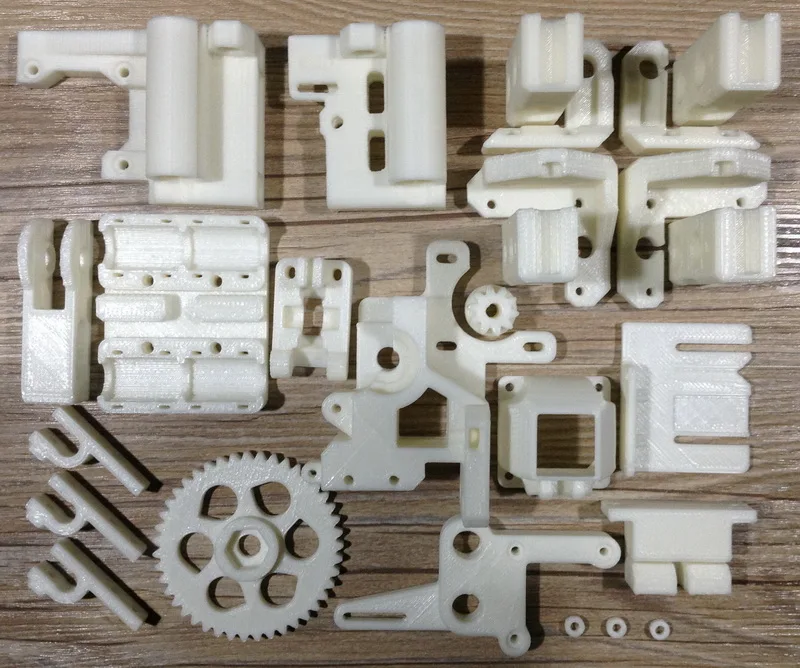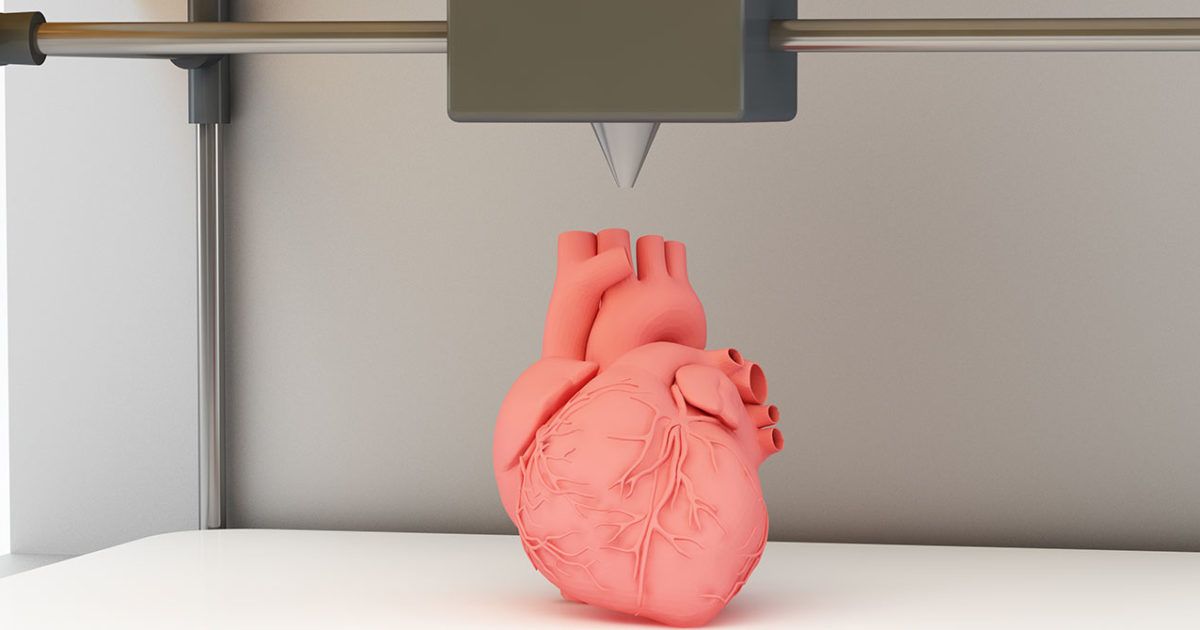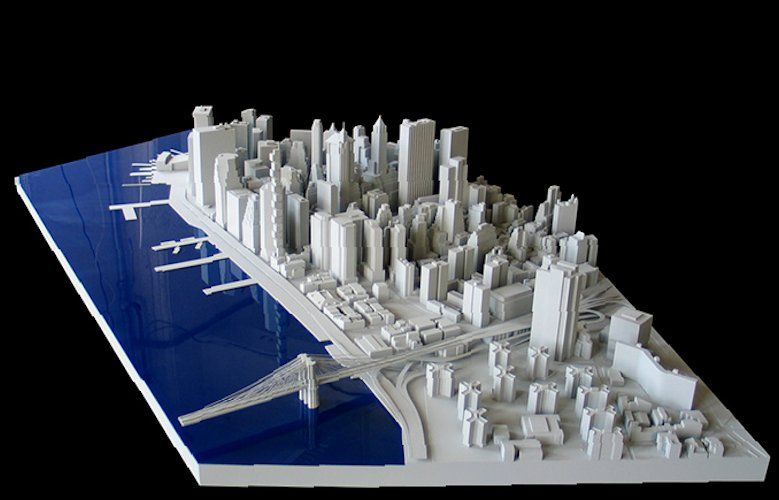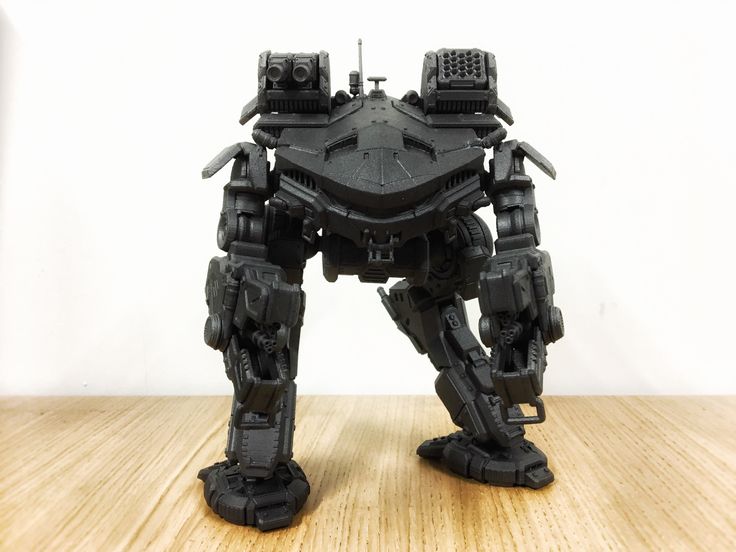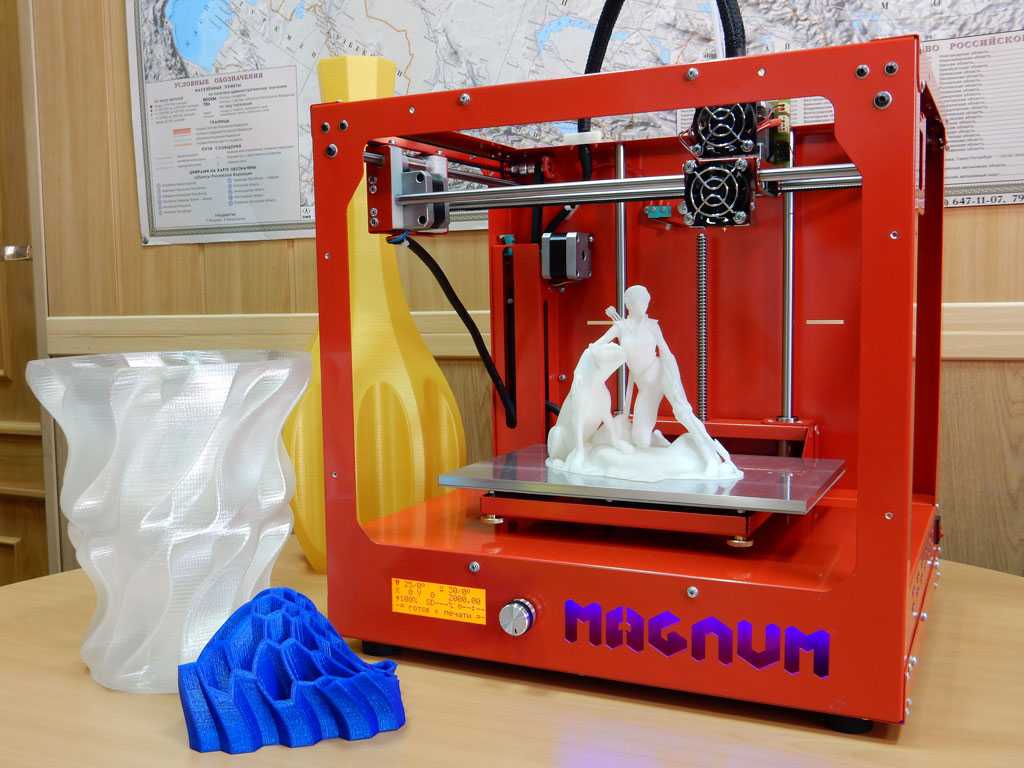Slicer software for 3d printing
Powerful, easy-to-use 3D printing software
Trusted by millions of users, Ultimaker Cura is the world’s most popular 3D printing software. Prepare prints with a few clicks, integrate with CAD software for an easier workflow, or dive into custom settings for in-depth control.
Slicing features
At the heart of Ultimaker Cura is its powerful, open-source slicing engine, built through years of expert in-house development and user contributions.
Intent profiles print specific applications at the click of a button
Recommended profiles tested for thousands of hours ensure reliable results
‘Custom mode’ gives over 400 settings for granular control
Regular updates constantly improve features and printing experience
Integrated workflow
If you own a 3D printer, software matters. Get the most from your printer with software designed to suit your workflow.
Seamless integration with all Ultimaker products
CAD plugin integration with SolidWorks, Siemens NX, Autodesk Inventor, and more
Compatible file types: STL, OBJ, X3D, 3MF, BMP, GIF, JPG, PNG
Easy to use
Manufacturing doesn’t need to be complicated. We design our software so anyone can use it – both experienced or rookie 3D printer users.
Prepare your 3D model for print in minutes with recommended settings
Simply choose speed and quality settings, and you can start printing
Ultimaker Cura is free and open source software
Ultimaker Marketplace
Being open and collaborating is in our DNA. Now we bring this to the professional 3D printing market with the Ultimaker Marketplace.
Download material profiles from leading brands for your application
Avoid manual setup when using third-party materials
Download useful plugins to customize the print preparation experience, star-rated by our community
An Ultimaker Cura experience that keeps your infrastructure rock-solid
Ultimaker Cura Enterprise delivers stability and security with features that are tailor-made for businesses.
Utimaker Cura Enterprise can be deployed, configured, and managed with cross-platform systems distribution
Ultimaker Cura Enterprise receives two updates a year.
 These are thoroughly tested by our community and ensure the most stable desktop application. We support updates for 12 months after release (including security patches and bug fixes)
These are thoroughly tested by our community and ensure the most stable desktop application. We support updates for 12 months after release (including security patches and bug fixes)Each release of Ultimaker Cura Enterprise is independently scanned, tested, and analyzed for vulnerabilities. We publish a summary of that report and we commit to continuously improving security
Backup & sync your materials & plugins
Save projects to the Digital Library
Access 3D printing e-learning courses
Join a community of 40,000+ active users
3D printers that simply work
Our award-winning 3D printers are robust, reliable, and easy to use. They deliver quality parts time and again. Designed and tested to run 24/7, they allow you to achieve the results you need more quickly and easily.
Learn about our 3D printers
Software ready for Industry 4.0
Trusted by millions of users across 14 languages, Ultimaker Cura slices your model and integrates with any workflow through Marketplace plugins.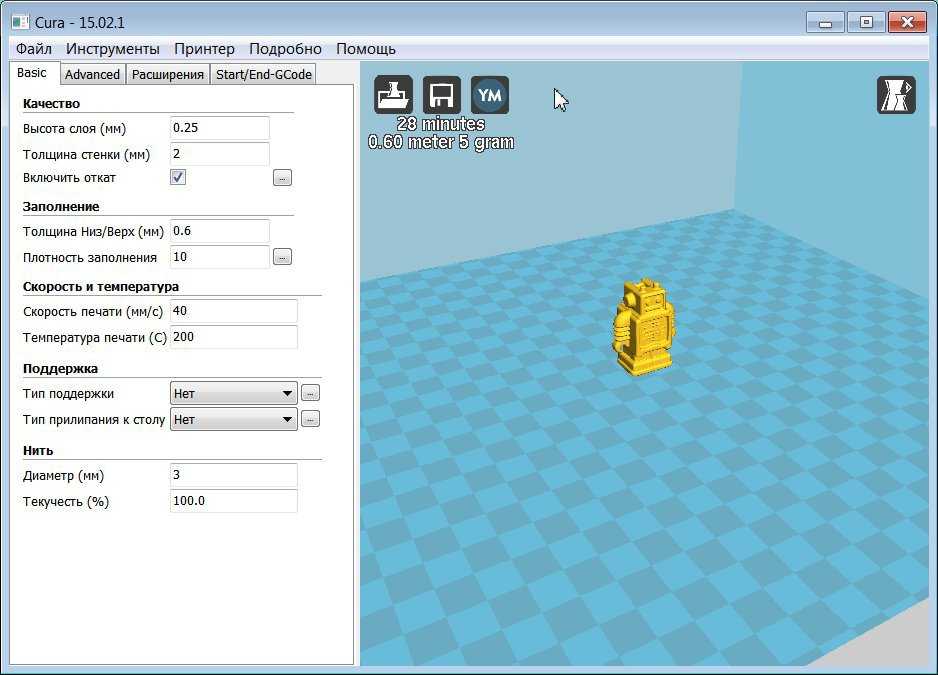 Then scale production and digital distribution with Ultimaker Digital Factory.
Then scale production and digital distribution with Ultimaker Digital Factory.
Material choice like never before
Ultimaker offers the widest material choice on the market. Through our Material Alliance, choose the perfect filament for your application – from advanced polymers to carbon fiber composites.
Learn about our materials
Support dedicated to your success
Wherever you are in the world, Ultimaker support is close by. Our global network of service partners offer professional installation, training, and maintenance in your language and time zone.
Learn about our support
10 Best Slicer Software for 3D Printing
The first and most critical step in printing a 3D item is running its computer model through a slicing software. 3D printing slicer software helps create instructions for 3D printers to follow. The part’s final quality depends heavily on these precise digital instructions.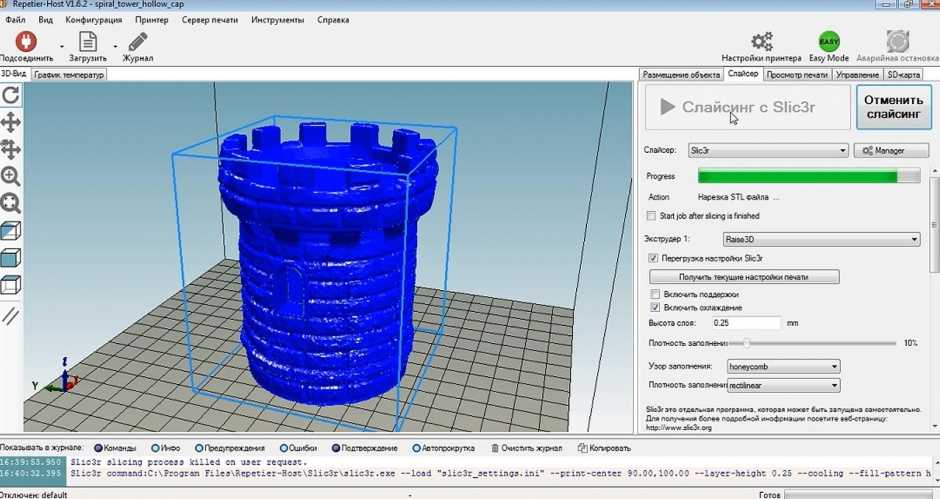 Build faults ruin printed prototypes. Proper employment of a good slicer is the key to minimizing them.
Build faults ruin printed prototypes. Proper employment of a good slicer is the key to minimizing them.
This article will help you choose the 3D printer slicer to fit your needs. It will also define this type of computer program, discuss the 10 best 3D printing slicer software packages available, outline how they work, and provide tips on how to choose a slicer software. The price for each is listed along with advantages and disadvantages.
1. Cura (Best Free 3D Slicer Software)
Cura 3D printing slicer software is a free and very common option. It handles 3D formats plus image formats for direct printing from 2D. The table below summarizes the advantages and disadvantages, and the cost of Cura:
| Advantages | Disadvantages | Cost |
|---|---|---|
Advantages Intuitive UI Fast processing Cura tree support | Disadvantages Lacks advanced features | Cost Free |
Table 1. Cura Information Summary
Cura Information Summary
2. OctoPrint (3D Printer Host for Remote Printing & Also a 3D Printer Slicer)
The OctoPrint slicer is not just a 3D printing slicer software, but also a web interface for 3D printers. It functions like a task manager, allowing you to control the print remotely. The table below summarizes the advantages, disadvantages, and the cost of OctoPrint:
| Advantages | Disadvantages | Cost |
|---|---|---|
Advantages Remote host for multiple printers | Disadvantages Internet security issues | Cost $143 |
Table 2. OctoPrint Information Summary
3. Prusa Slicer (Best 3D Printer Software For Prusa Printer Owners)
Prusa makes a printer kit, so their 3D printing slicer software is optimized for their machines. Prusa 3D Slicer can also drive many other manufacturers' printers, with settings for 60+ materials. Many users prefer PrusaSlicer vs Cura 3D printer slicer software.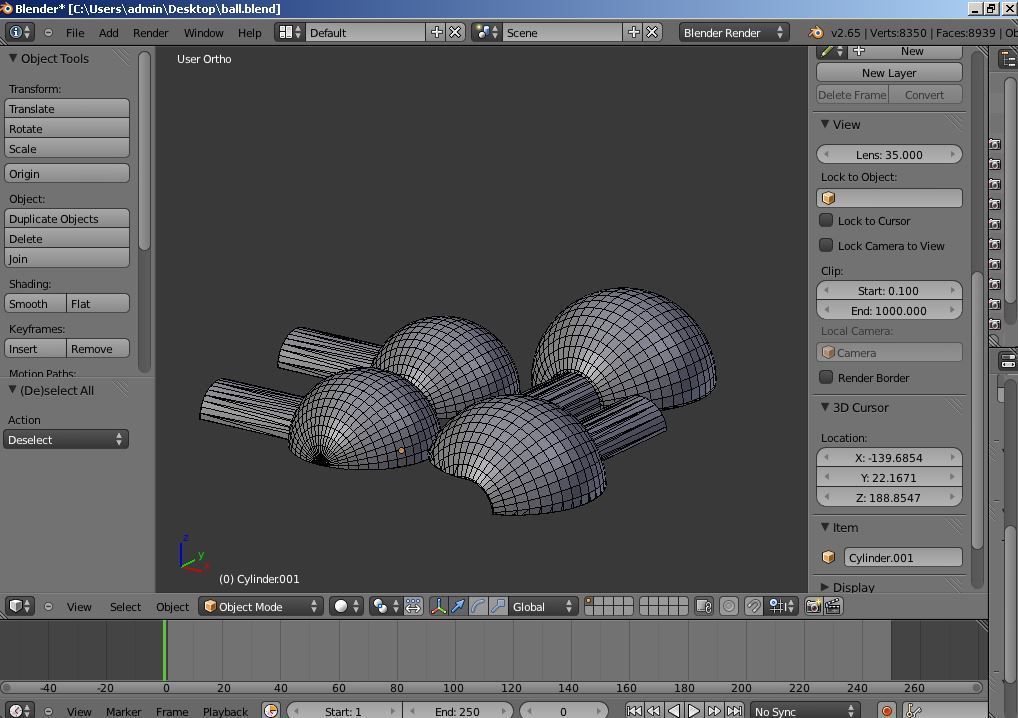 The table below summarizes the advantages, disadvantages, and cost of PrusaSlicer:
The table below summarizes the advantages, disadvantages, and cost of PrusaSlicer:
| Advantages | Disadvantages | Cost |
|---|---|---|
Advantages Drives most printers Easy to learn | Disadvantages Lacks advanced tools | Cost Free |
Table 3. PrusaSlicer Information Summary
4. Simplify3D (Best 3D Slicer For Experienced Makers)
Simplify3D has advanced features for experienced users. It works with most 3D printers and includes tools that help you find and fix file errors and run several prints at once. The table below summarizes the advantages, disadvantages, and the cost of Simplify3D:
| Advantages | Disadvantages | Cost |
|---|---|---|
Advantages Tools for advanced users Build simulations | Disadvantages Harder to learn | Cost $149 |
Table 4. Simplify3D Information Summary
Simplify3D Information Summary
5. Slic3r (Best Open Source 3D Slicer)
Slic3r is the leading open-source 3D printing slicer software and offers cutting-edge capabilities. It has advanced features, making it popular among professionals. The table below summarizes the advantages, disadvantages, and cost of Slic3r:
| Advantages | Disadvantages | Cost |
|---|---|---|
Advantages Professional UI Good tools Accessible settings | Disadvantages Requires familiarization | Cost Free |
Table 5. Slic3r Information Summary
6. Repetier (Great 3D Slicer For Remote 3D Printing)
Repetier is loaded onto Raspberry Pi units used to control printers. It includes tools like Repetier-Server for remote monitoring that enhance the 3D slicer’s functionality. The table below summarizes the advantages, disadvantages, and cost of Repetier:
| Advantages | Disadvantages | Cost |
|---|---|---|
Advantages Remote access Multiple slicers and printers | Disadvantages Difficult to use No repairs for input files | Cost Free |
Table 6.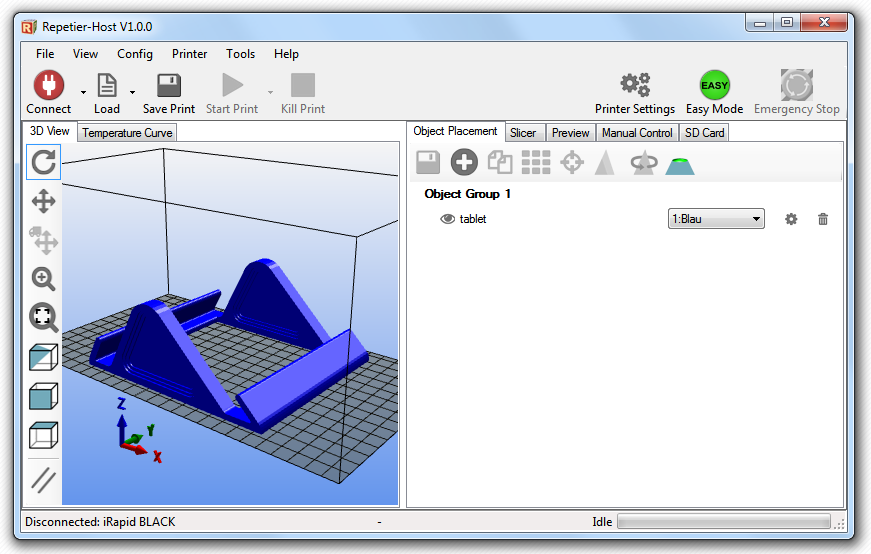 Repetier Information Summary
Repetier Information Summary
7. SelfCAD (Paid with Free Option)
SelfCAD is a larger CAD tool that contains a 3D printing slicer software. The SelfCAD slicer is derived from Cura software. SelfCAD has capable evaluation and repair tools. The table below summarizes the advantages, disadvantages, and costs of SelfCAD:
| Advantages | Disadvantages | Cost |
|---|---|---|
Advantages Easy customization Remote access Advanced tools | Disadvantages Similar to Cura (which is free) Lacks advanced features | Cost $14.99 per month or one-time $599 fee |
Table 7. SelfCAD Information Summary
8. KISSlicer (Best 3D Slicer for Experts)
KISSlicer is 3D printing slicer software tailored for experts. It’s an intricate system with fine capabilities for particularly advanced users. The table below summarizes the advantages, disadvantages, and costs of KISSlicer:
| Advantages | Disadvantages | Cost |
|---|---|---|
Advantages Powerful tools for advanced users | Disadvantages Complex user interface | Cost Free basic Up to $82 per year for full capabilities |
Table 8. KISSlicer Information Summary
KISSlicer Information Summary
9. Tinkerine Suite (Best 3D Slicer For Education / Schools / Beginners)
Tinkerine makes educational tools. Unsurprisingly, then, their 3D printing slicer software is easy to learn. The free slicer software is common in schools. The table below summarizes the advantages, disadvantages, and costs of Tinkerine Suite:
| Advantages | Disadvantages | Cost |
|---|---|---|
Advantages Very easy to use | Disadvantages Lacks advanced capabilities | Cost Free basic Up to $82 per year |
Table 9. Tinkerine Suite Information Summary
10. Netfabb (Professional 3D Slicer for Metal 3D Printing)
Netfabb has moved from a free to a paid model. It is the leader in high-end slicer programs aimed at professionals. The table below summarizes the advantages, disadvantages, and costs of Netfabb:
| Advantages | Disadvantages | Cost |
|---|---|---|
Advantages Powerful analysis, repair, editing, simulations, and warping toolsets | Disadvantages Not easy to learn | Cost $230 to $4,635 per year |
Table 10.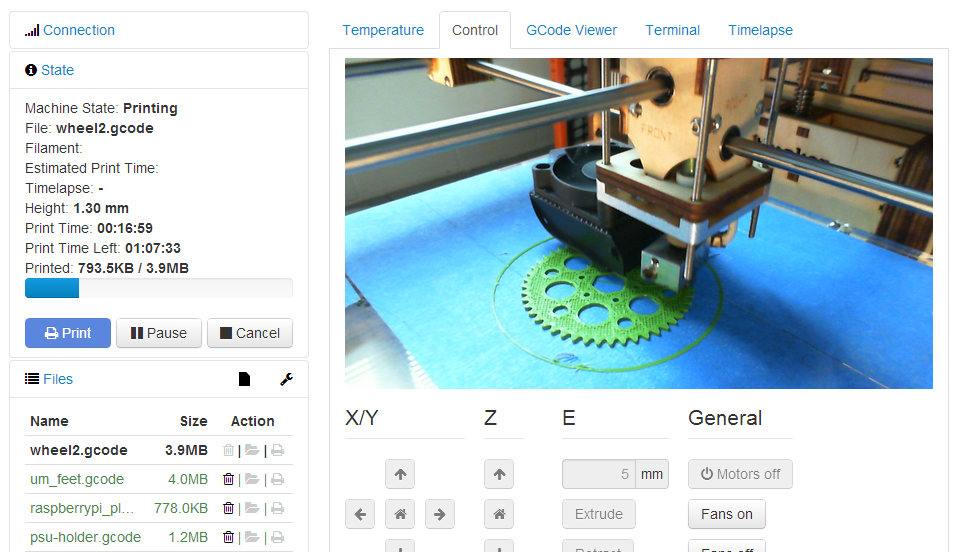 Netfabb Information Summary
Netfabb Information Summary
What is a 3D Slicer in 3D Printing?
3D printing slicer software converts 3D models into printer instructions. These instructions tell the printer head where to go, how to move there, and what to do when it arrives. A slicer software “slices” digital models into layers to be printed, plus controls print parameters. It is generally installed on your computer, but online slicers are also available.
For more information, see our article on Everything You Need to Know About 3D Printing.
What Features Should a Good 3D Slicer Have?
Any capable 3D slicer software needs to optimize these features:
- Speed and accuracy - Efficiently convert printer instructions.
- Repairs and warnings - An ability to flag errors and repair them.
- Ease of use - Intuitive user interface
- File import and processing rate - Quick accessing and processing of files.
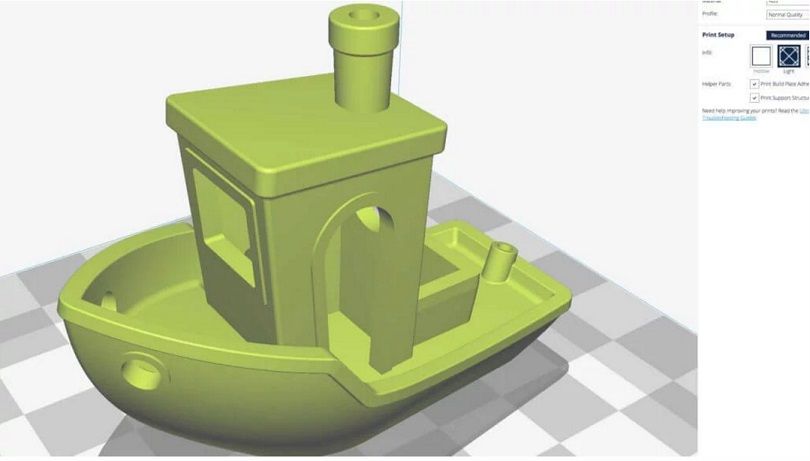
- Effective support - Generates appropriate support structures.
- Print process updates - Calculate and inform users of print time and material/filament needs.
What is the Most Widely Used 3D Slicer Software?
Cura is the most common 3D printing slicer software. By many measures, it is generally accepted as the best and has a wide user community.
Which 3D Slicer Software is the Most Expensive?
Netfabb is the most expensive software, though the price varies depending on the licensing option.
How Can I Get 3D Slicer Software for Free?
Free 3D printing slicer software packages are available online and can be downloaded anytime. Below are the steps to get free 3D Slicing Software:
- Read 3D slicer reviews
- Choose the best slicer software for your needs.
- Visit the appropriate website:
- Follow the installation and setup guides and you’re ready to slice.
How Much Does 3D Slicing Software Cost?
3D printing slicer software cost varies depending on the brand and the features. Prices range from free up to several thousand dollars per year.
Prices range from free up to several thousand dollars per year.
What Is the 3D Printing Slicer Setting?
3D slicer software precisely controls the printer operation, so several variables must be set. Users tend to want more control as they gain experience. Any capable 3D slicer software will offer the user control over a variety of settings including:
- Print speed
- Layer thickness
- Shell
- Upper/lower thickness
- Fill density
- Support
- Spiralization
- Retraction
These settings can overlap so changes can have unexpected consequences - single changes are usually the way to go while learning.
How Do I Set Up 3D Slicing Software?
The setup process for 3D slicing software is generally similar across all 3D slicer software packages and is outlined below:
- Upload 3D files into the software using a graphical representation of the product.
- Set part(s) orientation
- Apply the user-controlled settings
- Run a build simulation to assess faults
- Send the job to the printer
How Does 3D Printing Slicing Work?
3D slicer software converts models into instructions suited to the 3D printer. It takes a designer's 3D model and renders it into instructions for the printer in the form of G-code, the CNC machine language.
It takes a designer's 3D model and renders it into instructions for the printer in the form of G-code, the CNC machine language.
Is a Slicer Required to 3D Print?
All printers require some form of 3D printing slicer software. Printers operate in a simplified and very rigid way which requires this intermediate translation.
Is Slic3r Better Than Cura?
There is a wide range of features to consider when choosing between Slice3r and Cura software. However, the relative benefits of the two packages are easy to evaluate. The table below compares the two slicers’ features:
| Features | Cura | Slic3r |
|---|---|---|
Features User interface | Cura Intuitive | Slic3r Complex |
Features Positioning parts in a build | Cura Intuitive | Slic3r Complex |
Features Model information | Cura Intuitive | Slic3r Complex |
Features Printer profiles | Cura Select from a preinstalled list | Slic3r User entered from printer manufacturer data |
Features Speed of processing | Cura Fast | Slic3r Up to 5x slower |
Features Variable layering | Cura No | Slic3r Yes |
Features Conditional G-code | Cura No | Slic3r Yes |
Selection depends on the experience of the user. Slic3r is more powerful for advanced users but requires deep knowledge. Cura slicer software is user-friendly.
Slic3r is more powerful for advanced users but requires deep knowledge. Cura slicer software is user-friendly.
Whatever your experience level or the usage intensity you expect, there is a 3D slicer that will suit your needs.
Summary
This article examined 10 of the common slicer software packages that are available and provided information to assist with making a selection.
Reach out to a Xometry representative today if you need help choosing the best 3D printing slicing software. Xometry offers a full range of 3D printing services for your project needs. Visit our Instant Quote Engine to get a free, no-obligation quote in minutes.
Disclaimer
The content appearing on this webpage is for informational purposes only. Xometry makes no representation or warranty of any kind, be it expressed or implied, as to the accuracy, completeness, or validity of the information. Any performance parameters, geometric tolerances, specific design features, quality and types of materials, or processes should not be inferred to represent what will be delivered by third-party suppliers or manufacturers through Xometry’s network.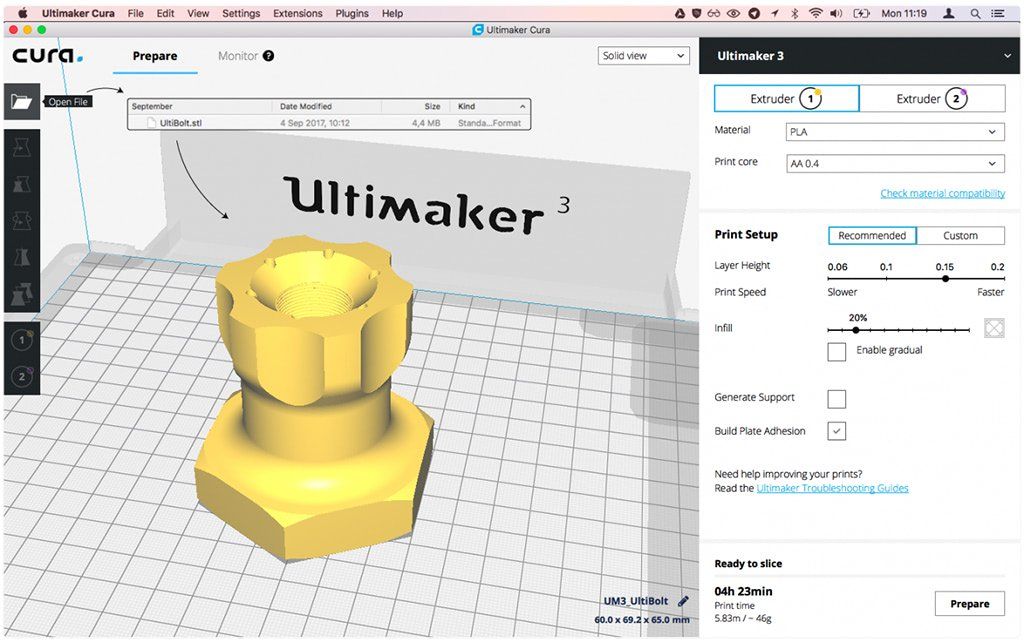 Buyers seeking quotes for parts are responsible for defining the specific requirements for those parts. Please refer to our terms and conditions for more information.
Buyers seeking quotes for parts are responsible for defining the specific requirements for those parts. Please refer to our terms and conditions for more information.
Team Xometry
This article was written by various Xometry contributors. Xometry is a leading resource on manufacturing with CNC machining, sheet metal fabrication, 3D printing, injection molding, urethane casting, and more.
Read Article - Top Best Free 3D Printing Slicer Software in 2022
Below is a list of the best free 3D slicers in 2022 - software for converting 3D models into layers for 3D printing.
Cura
Cura is an open source slicing software created by Ultimaker for their 3D printers, but can also be considered a common standard as it is compatible with most other 3D printers. Its functionality can be easily extended with a large number of convenient plugins. Since this is one of the most popular and widely used 3D printer slicers on the market, there's a good chance that a profile for your 3D printer is already available in the software, allowing you to get started right away.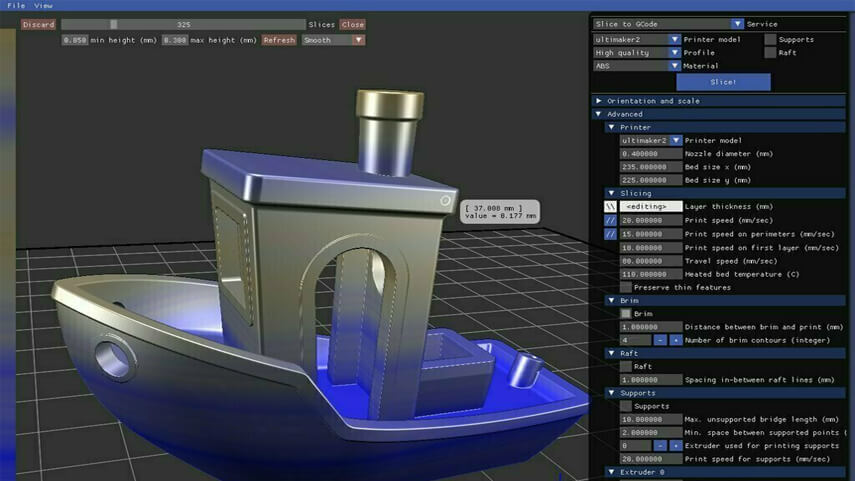 If this is not the case, you can download and import a third party profile. nine0003
If this is not the case, you can download and import a third party profile. nine0003
This 3D printing software is very easy to use and allows you to manage the most important 3D printing settings in a clear interface. Start with "Basic" mode for a quick start, where you can only reconfigure the most basic printer settings. If you need finer control over your print settings, switch to Advanced, Expert, or All for more settings. In these modes, Cura provides users with up to 400 customization options to suit your needs and get the best results. nine0003
This slicer is constantly updated and improved, new versions are constantly released, so you can be sure that you get the latest program. Recently, the new version of Cura 5.1 introduced settings for FDM metal printing.
You can also use Cura as a 3D printer remote control software, but the 3D printer must be connected to the PC during printing. Integration with CAD systems such as SolidWorks and Siemens NX makes the software valuable even in professional applications. But for the vast majority of home users, Cura is a simple and affordable 3D printing slicer. nine0003
But for the vast majority of home users, Cura is a simple and affordable 3D printing slicer. nine0003
In addition to ease of use, you can also find many educational resources on how to best use Cura's latest features, as well as a community forum on the Ultimaker website.
Cure download link.
Prusa Slicer
Prusa Research, the company behind the original Prusa 3D printers, has developed its own slicer, PrusaSlicer, based on Slic3r, an open source slicer. PrusaSlicer has gained a lot of popularity very quickly for a number of reasons: not only does it have a large list of Slic3r's adjustable settings, but it also has some handy features that the original software didn't have. nine0003
With a redesigned interface, built-in support for Prusa's own range of printers, and user-friendly settings for a range of common media, there are many improvements over the original software. Key features include customizable supports, support printing with different materials, and flexible layer height settings.
PrusaSlicer can be used to cut models for both FDM printers and photopolymer 3D printers. It has various modes allowing you to edit the settings depending on your experience, and the Expert mode opens up a huge list of customization options. However, even simple profiles can work well in PrusaSlicer. There are fewer printer presets than some other popular slicers, but it's just as easy to set up or import custom settings. nine0003
Based on Slic3r, PrusaSlicer supports most of the original features and even accepts Slic3r configuration packages when importing profiles.
Link to download Prusa Slicer.
ideaMaker
Raise3D ideaMaker slicing software is optimized for the company's 3D printers, similar to how PrusaSlicer is optimized for original Prusa printers and Ultimaker Cura for Ultimaker hardware, but like other software, it also works well with third-party 3D printers. nine0003
The workflow and user interface is a bit more complex than Cura and PrusaSlicer, but it's worth a little digging and you'll have quick access to advanced per-layer settings and print modifiers, including the ability to texture models or brand your parts.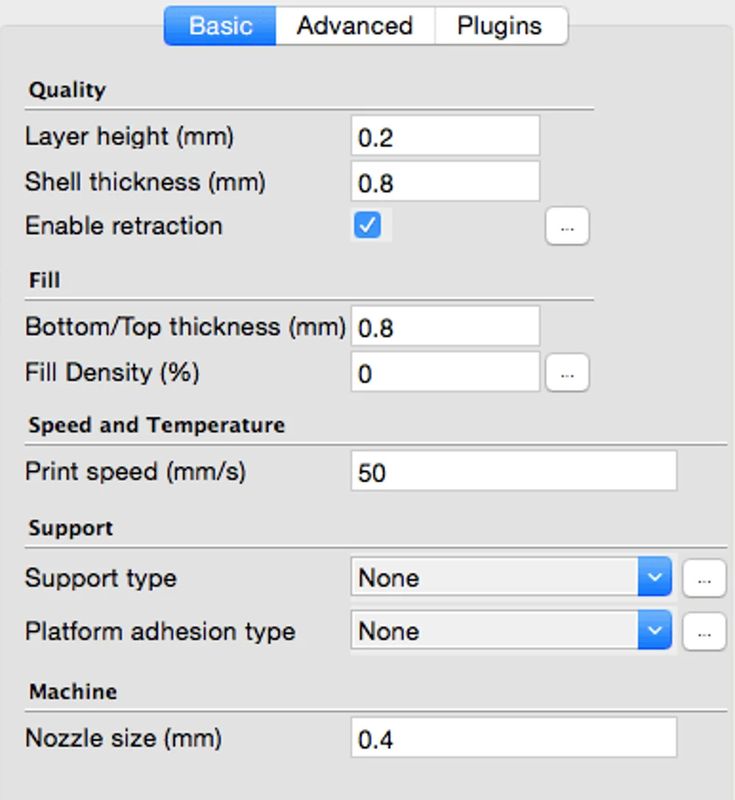
By connecting to Raise3D cloud services, you can download hundreds of community and Raise3D-created printer and media profiles for faster and better printing, or create your own library of settings and profiles. nine0003
Customizable supports, model splicing and mesh correction tools are all provided by ideaMaker, which allows you to get consistent print results every time. Print sequencing and built-in compatibility with OctoPrint are also additional features that improve print quality.
You can also switch between dark and light ideaMaker interface themes for a more comfortable slicer experience.
Download link for ideaMaker. nine0003
CHITUBOX Basic
Chances are if you're using a budget desktop 3D resin printer, it comes with CHITUBOX (now known as CHITUBOX Basic). The software is developed by CTB Systems, which also makes many of the motherboards and firmware for these printers (hence the company's default software is software that goes great with anything). nine0003
nine0003
The main purpose of CHITUBOX Basic is cutting 3D models for printing on photopolymer 3D printers. With CHITUBOX Basic you get full control over printer settings as well as a large list of common and popular printer profiles and resins.
The most important element of preparation for photopolymer 3D printing is the orientation of the model and the setting of supports. Orientation is not the easiest - it does not have an automatic mode, but the generation of automatic support is quite reliable and in many cases gives good results. More fine-tuning may be required to properly support parts, but the support customization options are simple and intuitive. nine0003
Link to download CHITUBOX Basic.
Lychee Slicer
With a wide variety of 3D printer profiles and resins, the Lychee Slicer is an attractive third-party option for your model slicing needs. This, and being one of the most user-friendly and easy-to-use slicers, makes the Lychee Slicer an excellent multifunctional solution for desktop resin printers. nine0003
nine0003
Automatic model orientation will help you get started preparing for 3D printing, but you can skip it and just hit the Magic button and let Lychee Slicer take care of everything. The results can sometimes be unpredictable, but when working with simple models, you will save time this way.
Some options are not available in the free version of Lychee Slicer, but this is not a problem. The free version is fully functional and has rich functionality.
Link to download Lychee Slicer.
Kiri:Moto
Written entirely to run in the browser, Kiri:Moto is a powerful tool that can be used to prepare models for 3D printing, laser engraving or CNC milling (the common factor here is that they are all exported via G-code) . The settings are simpler than locally installed slicers, but they provide most of what you would normally need, including z-axis retract settings. nine0003
There is complete freedom to add printers using a few simple parameters such as build area, G-code type, and number of extruders.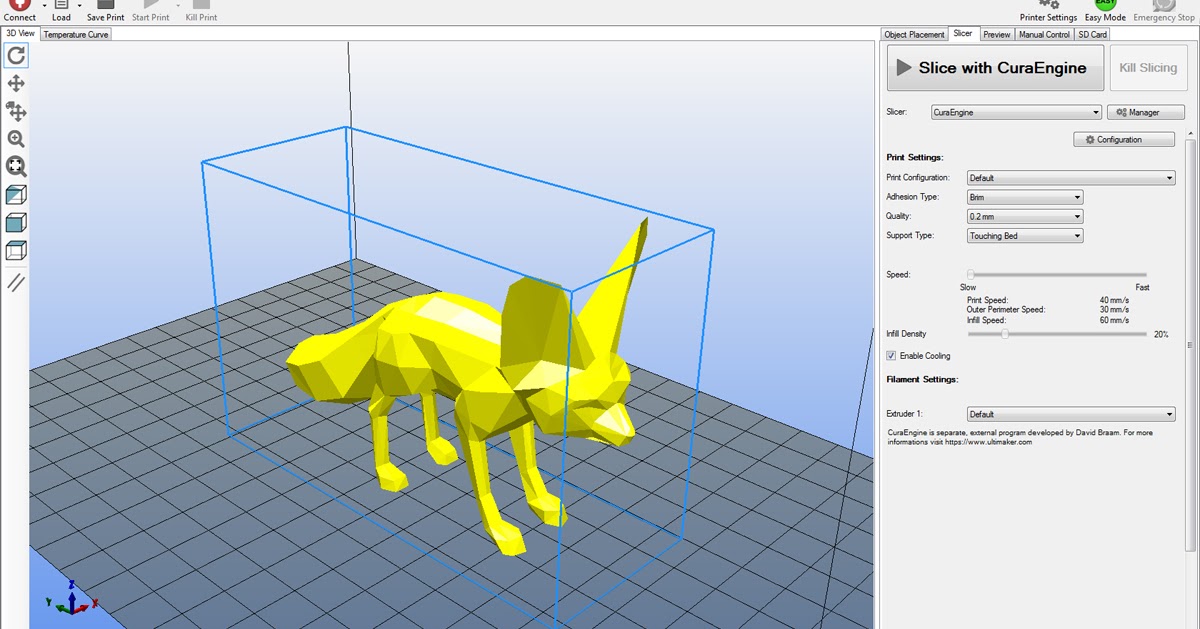 In addition, there are necessary options for customizing and exporting G-code files.
In addition, there are necessary options for customizing and exporting G-code files.
Link to Kiri:Moto.
IceSL
IceSL is an amazing 3D printing software. This is not just a slicer, but also a 3D modeling tool. In the left window, you can edit your model directly using scripts in a language based on Lua. nine0003
On the right you will find a wide range of slicing settings. Beginner-friendly presets make cutting a model quick and easy. But once you open the advanced settings, you get a lot of cool features that the IceSL team has been developing over the years.
Most notable from the latest release are the progressive settings, which allow you to specify different print settings for different layers, with IceSL making incremental changes on its own. This means smooth transitions from high to low fill and from low to high, among other things. nine0003
Link to download IceSL.
Read more about 3D printing and its application in different areas in our blog, and also subscribe to our social networks.
Top 20 Free 3D Printing & 3D Printing Software
Looking for 3D printing software? We've rounded up the top 20 software tools for beginners and professionals alike. Most slicers are free.
What is a slicer? This is a program for preparing a digital model for printing. Models for 3D printing are usually distributed in STL files. To turn an STL file into G-code (a language that a 3D printer understands), a slicer program is required. It is called a slicer because it cuts (to slice - English) a 3D model into many flat two-dimensional layers, from which a 3D printer will add a physical object. nine0003
Which slicer should I choose? In this article, we will tell you which slicer is best for 3D printing for each stage of your work. Which one is better for preparing a 3D model for printing? But what if you need to create a 3D model from scratch? And if you are only taking the first steps in 3D?
Don't be afraid: we've answered all of these questions, including the required skill level for each program and where you can download it.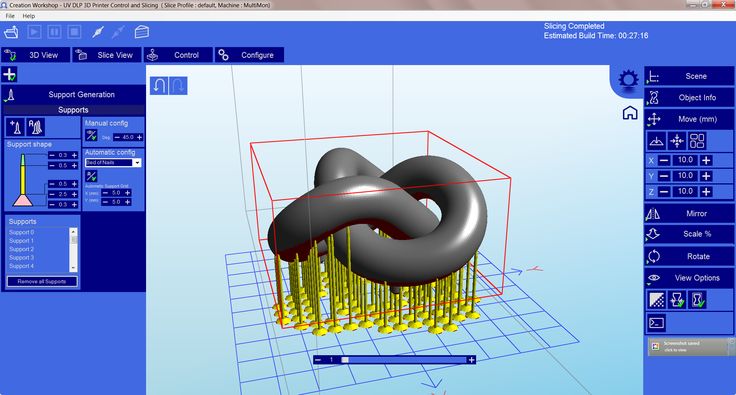 The great thing is that most of these programs are completely free and open source. nine0003
The great thing is that most of these programs are completely free and open source. nine0003
- Cura
- CraftWare
- 123D Catch
- 3D Slash
- TinkerCAD
- 3DTin
- Sculptris
- ViewSTL
- Netfabb Basic
- Repetier
- FreeCAD
- SketchUp
- 3D Tool
- Meshfix
- Simplify3D
- Slic3r
- Blender
- MeshLab
- Meshmixer
- OctoPrint
#1: Cura
For beginners who need a slicer to prepare STL files for 3D printing
Cura is the default slicer software for all Ultimaker 3D printers, but can be used with most others , including RepRap, Makerbot, Printrbot, Lulzbot and Witbox. The program is completely open source, its capabilities can be extended using plugins.
This program is very easy to use and allows you to manage the most important 3D printing settings through a clear interface.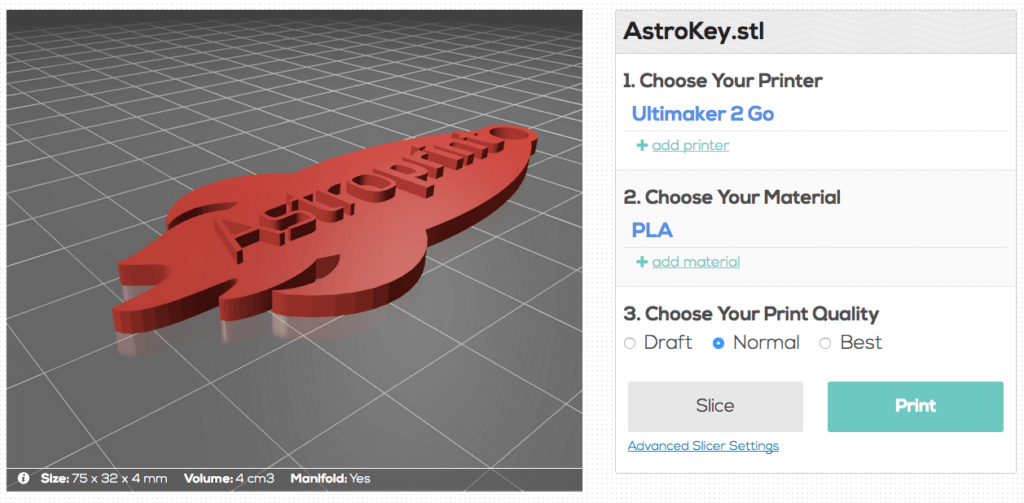 Start in Basic mode to quickly get up to speed and change print quality settings. If finer control is required, switch to Expert mode. nine0003
Start in Basic mode to quickly get up to speed and change print quality settings. If finer control is required, switch to Expert mode. nine0003
Cura can also be used to directly control the printer, but then the printer and computer must be connected to each other.
Download: Cura
Price: Free
Systems: PC, Mac, Linux
#2: CraftWare
For beginners to prepare STL files for 3D printing 3D printers by the Hungarian startup CraftUnique to support their CraftBot crowdfunding machine. However, the program works with other printers. nine0003
Like Cura, CraftWare allows you to switch from "Easy" to "Expert" mode, depending on how confident you feel. It's a colorful app that features a visual G-code visualization with each function represented by a different color. But the most outstanding feature is the individual support service. As far as we know, only the paid program Simplify3D has this.
Please note, however, that this program is still in beta, so bugs may occur. nine0003
nine0003
Download: CraftWare
Price: Free
Systems: PC, Mac
#3: 123D Catch
-systems, smartphones and tablets, which allows you to convert images of objects into a 3D model. Pictures can be taken with a smartphone/tablet or digital camera.
You need many photos of the object from different angles - the more the better - after which they will be compiled into a 3D model. nine0003
123D Catch is more of a fun app than a professional 3D printing tool, but after some tambourine dancing, you can get good results, especially when paired with an STL editor like MeshLab or Meshmixer.
Price: Free
Systems: PC, Android, iOS, Windows Phone
#4: 3D Slash
and surprisingly simple, and refreshingly new. With 3D Slash, you can design 3D models using your dice skills. nine0003
You can start with a large block and, like a virtual sculptor, remove small cups from it with tools such as a hammer or drill, or start from empty space and build a model from cubes and other shapes. You can paint with flowers or use template pictures.
You can paint with flowers or use template pictures.
Other features worth mentioning are tools for creating logos and 3D text. The Logo Wizard imports an image and creates a 3D model, while the Text Wizard allows you to enter and format text, and then turn it into 3D. nine0003
Recommended!
Download: 3dslash.net
Price: Free
Systems: PC, Mac, Linux, Browser
#5: TinkerCAD
- A computer-aided design (CAD) system for 3D printing, which is a good starting point for beginners. Since its capabilities are limited compared to Blender, FreeCAD and SketchUp, many users switch to more powerful tools after some time. nine0003
As in 3D Slash, here you can build models from basic shapes. At the same time, unlike 3D Slash, TinkerCAD allows you to create vector shapes in 2D and convert them into three-dimensional models.
Come in: Autodesk TinkerCAD
Price: Free
Systems: Browser
#6: 3DTin
For beginners who want to create 3D printable models
another easy and intuitive online tool choice for beginners in 3D modeling. All you need is a Chrome or Firefox browser with WebGL enabled. nine0003
All you need is a Chrome or Firefox browser with WebGL enabled. nine0003
Choose from a huge library of 3D shapes and add them to your sketch. All sketches are stored in the cloud, access to them is free if you honor the Creative Commons license. Everything can be exported to STL or OBJ formats.
Enter: 3DTin
Price: Free
Systems: Browser
#7: Sculptris
For beginners who want to create 3D printable models
clay. This is a fantastic 3D modeling program if figurines are your main task. For example, you can make a bust of your favorite video game or comic book character. Sculptris is completely free and bills itself as a stepping stone to the more complex (and expensive) ZBrush tool. nine0003
Download: Pixologic Sculptris
Price: Free
Systems: PC, Mac
#8: ViewSTL
For beginners who want to view STL files
ViewSTL is the easiest way to view STL files . Simply open a web page and drag the STL onto the dotted box.
The STL online viewer allows you to display the model in one of three views: flat shading (for a quick view), smooth shading (for a high-quality image), and wireframe. nine0003
Enter: ViewSTL
Price: Free
Systems: Browser
#9: Netfabb Basic
some nice features that allow you to analyze, "repair" and edit STL files before moving on to the model cutting stage.
A good choice if you need more than just a slicer and want to be able to quickly fix STL files without having to learn programs like MeshLab or Meshmixer. nine0003
Don't let the 'Basic' in the name fool you, Netfabb Basic is actually a very powerful 3D printing tool. It's "basic" only in the sense that it doesn't cost €1,500 like Netfabb Professional!
Download: netfabb.de
Price: Free
Systems: PC, Mac, Linux
No. 10: Repetier
For advanced to prepare STL files for 3D printing
9002 the next level of 3D printer slicer software, but if you want to stay open source, you should look into Repetier.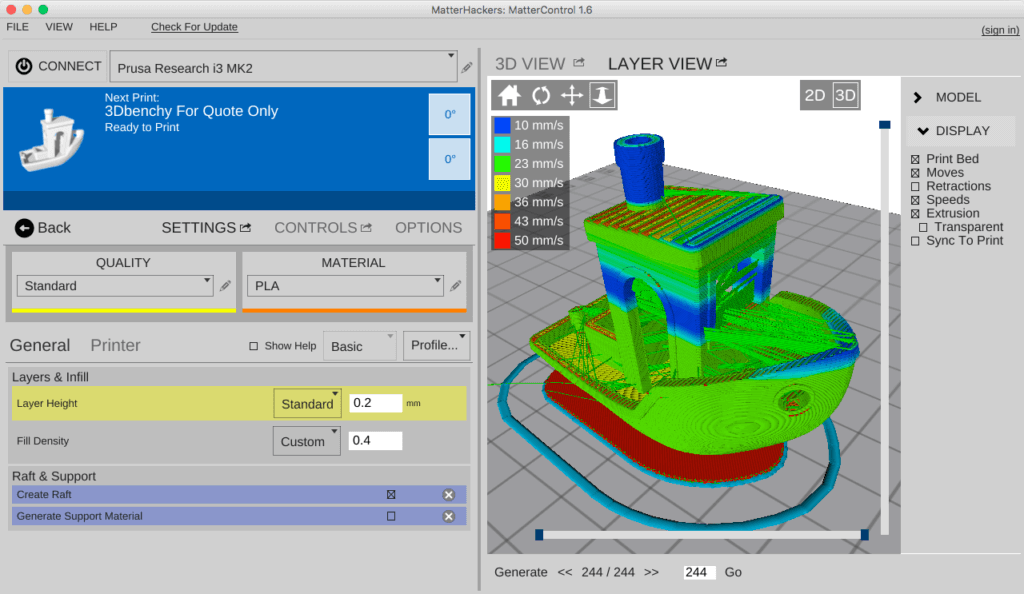 It is the great grandfather of 3D printing software and a favorite of the RepRap community. nine0003
It is the great grandfather of 3D printing software and a favorite of the RepRap community. nine0003 Today the program is moving by leaps and bounds from the level for beginners to advanced users. Packaged in an all-in-one configuration, it supports up to 16 extruders, multi-slicing via plug-ins, and virtually every fusing 3D printer on the market. Get ready to tinker!
What's more, Repetier Host works remotely via Repetier Server, so that the 3D printer can be controlled via a browser, tablet or smartphone. nine0003
Download: Repetier
Price: Free
Systems: PC, Mac, Linux
#11: FreeCAD
The program is a great option for developing your design skills. More technically, this parametric 3D modeling program allows you to easily change the project by rolling back through the history of the model and editing the parameters. nine0003
Download: freecadweb.org
Price: Free
Systems: PC, Mac, Linux
#12: SketchUp
For beginners who want to create 3D printable models
SketchUp is the perfect combination of simplicity and - the perfect combination functionality, with a user-friendly interface and a relatively flat learning curve (i. e., as experience grows with the time spent), the ideal program for developing three-dimensional models.
e., as experience grows with the time spent), the ideal program for developing three-dimensional models.
The Make SketchUp version is free and will have everything you need for 3D modeling if you also download and install the free STL exporter. There is also a professional edition for architects, interior designers and engineers. nine0003
Download: sketchup.com
Price: Free (SketchUp Make), $695 (SketchUp Pro)
Systems: PC, Mac, Linux
#13: 3D-Tool Free Viewer
view and check STL files
3D-Tool Free Viewer is a sophisticated tool that, among other things, allows you to check the structural integrity and printability of your file. With the Cross-Section function, for example, you can look at the model from the inside and check the wall thickness. Very useful if you want to check your STL file for killer errors before printing. nine0003
Download: 3D-Tool
Price: Free
Systems: PC
#14: Meshfix
your model for errors.
Price: Free
Systems: Browser
#15: Simplify3D
For professionals to prepare STL files for 3D printing print. A flexible algorithm checks the model for problems, fixes them, shows a preview of the printing process (ideal for identifying potential problems), and then slices it. nine0003
This slicer offers the best infill pattern options in the competition. For models that require supports, Simplify3D will create the appropriate structures on its own and give you full control over their placement. For printers with a dual extruder, when printing with different materials, the Dual Extrusion wizard will help, as a result of which, for example, it will be easier to remove the dissolving filament.
Simplify3D supports 90% of today's commercially available desktop 3D printers and is compatible with Marlin, Sprinter, Repetier, XYZprinting, FlashForge, Sailfish and MakerBot firmware. Simplify3D can also be used to directly control the printer, but then the printer and computer must be connected to each other.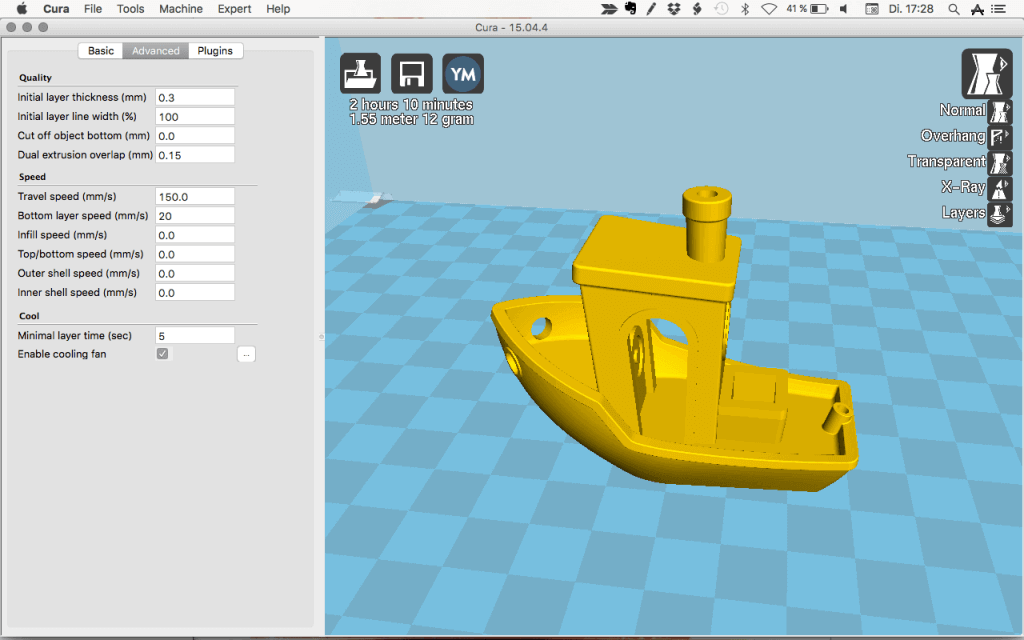 nine0003
nine0003
Download: simplify3d.com
Price: $149
Systems: PC, Mac, Linux
#16: Slic3r
source code, which has a reputation as a carrier of super new functionality, which you will not find anywhere else. The current version of the program is able to show the model from multiple angles, so that the user gets a better preview experience.
There's also an incredible 3D honeycomb infill, the first of its kind that can extend over multiple layers rather than repeating itself like a stamp. This significantly increases the strength of the internal filling of the model and the final printout.
Another option is direct integration with Octoprint. Once the files on the user's desktop are sliced, they can be directly uploaded to Octoprint with one click.
Download: Slic3r
Price: Free
Systems: PC, Mac, Linux
#17: Blender
For professionals who want to create 3D printable models
Blender is a popular computer-aided design (CAD) system with a steep learning curve.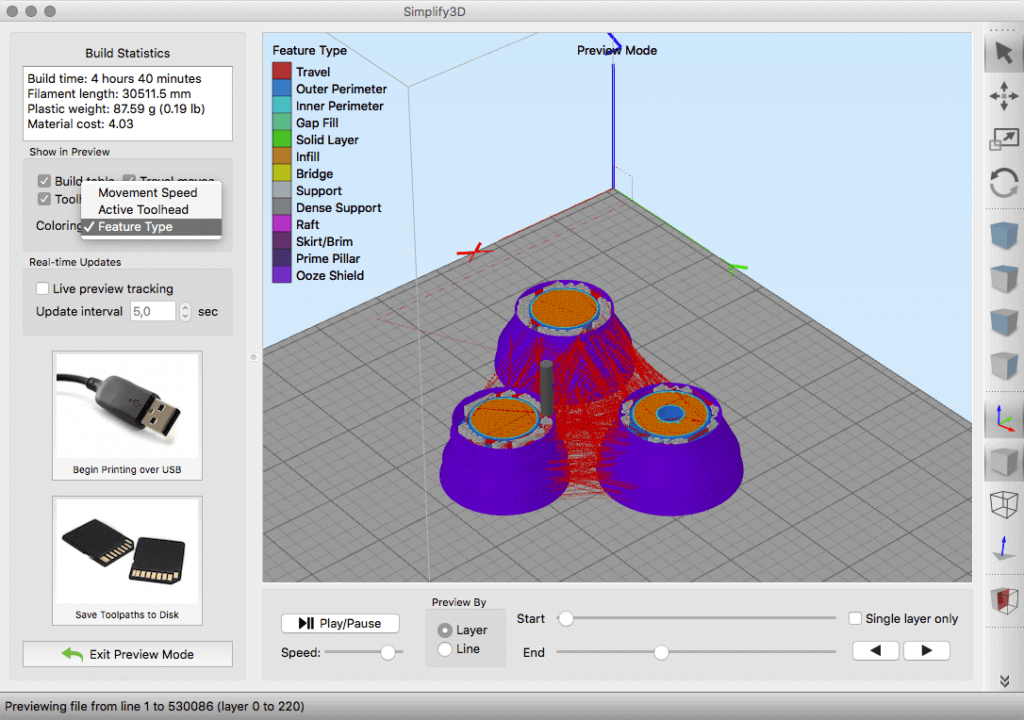 Not at all the best choice for beginners, but what you need if you are quite experienced and need something more complex for modeling and printing.
Not at all the best choice for beginners, but what you need if you are quite experienced and need something more complex for modeling and printing.
In short, Blender is one of the most powerful tools in existence. Its community is always ready to help, there are a lot of educational materials. It's also open source, so enthusiasts often write extensions to make it even better and more powerful. nine0003
Download: blender.org
Price: Free
Systems: PC, Mac, Linux
#18: MeshLab
For professionals to prepare STL files for 3D printing
MeshLab - advanced editor. It allows you to remove parts of a 3D model, merge two models into one, patch holes. If you need a program to modify models for 3D printing or some kind of "repair" work, MeshLab is the right choice.
Price: Free
Systems: PC, Mac, Linux
#19: Meshmixer
For professionals to prepare STL files for 3D printing files. It's especially good for identifying potential problems and fixing them automatically.


